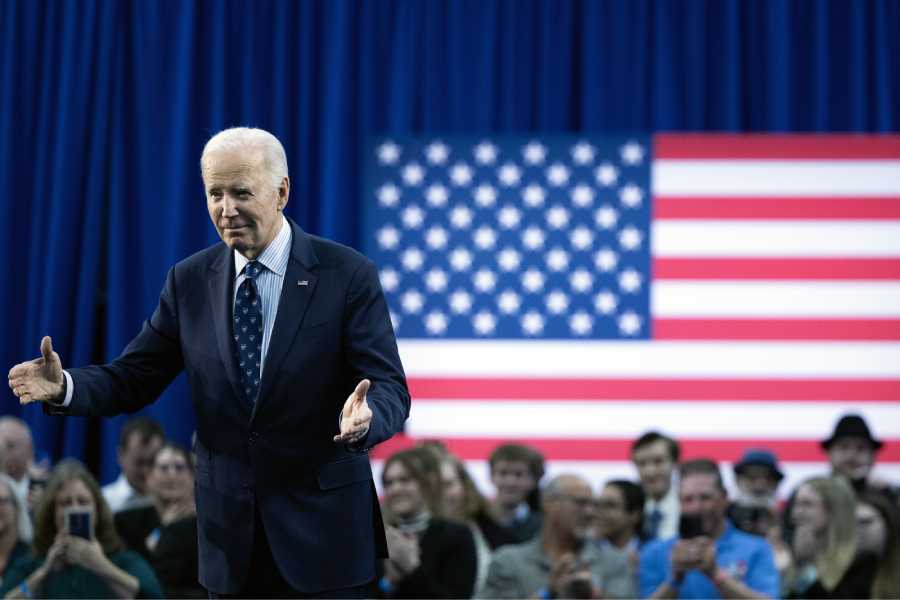President Joe Biden canceled $7.4 billion in student loan debt on Friday as he tries to shore up support with young voters who are disproportionately affected by soaring education costs, but who may be drifting away over his policy on Israel and the war in the Gaza Strip.
The latest round of relief is part of a strategy by the White House to take smaller, targeted actions for certain subsets of borrowers after the Supreme Court struck down a far more ambitious plan to wipe out $400 billion in debt last year.
Biden said this week that he would make another attempt at large-scale debt forgiveness for about 30 million people, despite Republican opposition and legal challenges. But in the meantime, he has been chipping away at student debt by fixing and streamlining existing programs that have been plagued by bureaucratic and other problems for years.
Friday’s announcement was the latest such move, affecting around 277,000 people. White House officials said those borrowers would be notified by email.
More than 200,000 of those who qualified had borrowed relatively small amounts originally — $12,000 or less — and have been making payments through the administration’s income-driven repayment plan, known as SAVE.
Others who will see relief include teachers, librarians, academics and public safety workers who have been making student loan payments for 10 years under the Public Service Loan Forgiveness program. Another 65,000 borrowers enrolled in other income-driven repayment plans will see adjustments reducing their debt, said Miguel A. Cardona, the education secretary.
So far, the Biden administration has forgiven $153 billion in debt for 4.3 million borrowers.
“We’ve approved help for roughly 1 out of 10 of the 43 million Americans who have federal student loans,” Cardona told reporters.
Republicans in Congress characterize student debt relief as unfair to borrowers who struggled to pay off their student debt without assistance.
“You’re incentivizing people to not pay back student loans and at the same time penalizing and forcing people who did to subsidize those who didn’t,” Rep. John Moolenaar, R-Mich., said during a hearing Wednesday, in which Cardona testified about the Education Department’s budget request for next year.
“I don’t see it as unfair. I see it as, we’re fixing something that’s broken,” Cardona said. “We have better repayment plans now so we don’t have to be in the business of forgiving loans in the future.”
On Monday, Biden outlined a new attempt to wipe out student loan debt on a larger scale, beyond the scope of the programs he has been relying on so far.
The new plan would reduce the amount that 25 million borrowers still owe on their undergraduate and graduate loans. It would wipe away the entire amount for more than 4 million Americans. Altogether, White House officials said, 10 million borrowers would see debt relief of $5,000 or more.
That plan must undergo a public comment period that stretches through the summer. It also must survive legal challenges.
The original plan relied on a law called the HEROES Act, which the administration argued allowed the government to waive student debt during a national emergency like the COVID pandemic. The Supreme Court disagreed.
Biden administration officials said because the new approach is based on a different law — the Higher Education Act — it is more likely to survive the expected challenges.
The New York Times News Service











